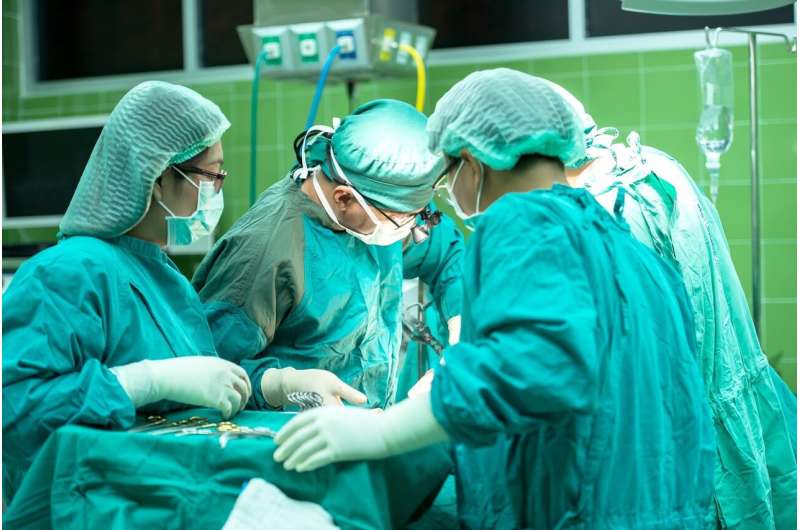Sleep disorders, anesthesia and surgery

An estimated 50 million people undergo surgery each year in the United States, and a significant proportion of them have undiagnosed or untreated sleep disorders (SD) or sleep-disordered breathing (SDB). Issues at the intersection of anesthesiology and sleep medicine are the focus of the Society of Anesthesia and Sleep Medicine (SASM) whose 10th anniversary is commemorated in the special theme May issue of Anesthesia & Analgesia.
The special issue looks back at a remarkable first decade of achievements in research and clinical practice by this young subspecialty society, while looking forward to further progress. A key focus is the potential for treating surgery and the perioperative period as an opportunity for recognition, diagnosis and effective treatment of patients with undiagnosed SD or SDB, according to an editorial by Satya Krishna Ramachandran, MD, Associate Professor of Anaesthesia at Harvard Medical School and President of SASM.
New insights on sleep apnea surgery, postoperative respiratory depression and more
The SASM theme issue presents 15 papers on key issues related to anesthesia and surgical management of patients with SD or SDB. Eric Brian Rosero, MD, MSc, and Girish P. Joshi, MBBS, MD, of University of Texas Southwestern Medical Center, Dallas, analyzed the outcomes of 3,208 patients undergoing sleep apnea surgery.
The study focused on complications and other outcomes for patients undergoing inpatient versus outpatient surgery. About two-thirds of patients had inpatient surgery, spending at least one night in the hospital. On initial analysis, the inpatient surgery group had a higher rate of hospital readmissions, repeat surgery, and complications: 6.8 versus 5.5 percent.
However, on further analysis of patients with similar risk factors (age, health conditions, etc.), the rate of adverse outcomes was almost identical for the inpatient and outpatient groups: 6.2 versus 5.9 percent. Certain factors were associated with a higher rate of adverse events, including diabetes and more complex surgery. "These risk factors could be used to determine the need for an overnight stay," Drs. Rosero and Joshi conclude.
A study led by Toby N. Weingarten, MD, of the Mayo Clinic, Rochester, Minn., used data from a previous study of patients undergoing continuous bedside monitoring after surgery to assess the occurrence of episodes of postoperative respiratory depression (RD). While postoperative RD events were once considered uncommon, recent studies suggest that they may occur in more than 40 percent of patients and often go unrecognized.
From the total of 250 patients, the researchers identified 155 patients with a total of more than 2,500 RD episodes within the first 24 hours after surgery. Initial RD episodes tended to occur within the first several hours after surgery. These initial episodes peaked in the late afternoon and early evening, often followed by repeated episodes during the early morning hours.
The rate and frequency of postoperative RD episodes were greater for patients who scored higher on a risk scale used in the original study. Dr. Weingarten and colleagues believe their unique data may have important implications for research and clinical practice, including the development of new postoperative monitoring strategies.
In his editorial, Dr. Ramachandran focuses on strategies to promote diagnosis and treatment of unrecognized sleep disorders in patients undergoing anesthesia and surgery. He writes, "If we in anesthesiology are indeed committed towards the fundamental tenets of perioperative medicine, the import of using the perioperative period to diagnose and initiate long-term medical care of SD or SDB cannot be overstated."
Assembled by invitation from the editors of Anesthesia & Analgesia, the SASM theme issue celebrates "a decade of research achievements in the common ground between sleep and anesthesia," according to an introductory editorial by Dr. Weingarten and his fellow guest editors. They add: "Among other things, these studies build the case for greater awareness of sleep issues among anesthesiologists and enhanced sleep training in anesthesia."
More information: C. Noelle Driver et al. Frequency and Temporal Distribution of Postoperative Respiratory Depressive Events, Anesthesia & Analgesia (2021). DOI: 10.1213/ANE.0000000000005478





















